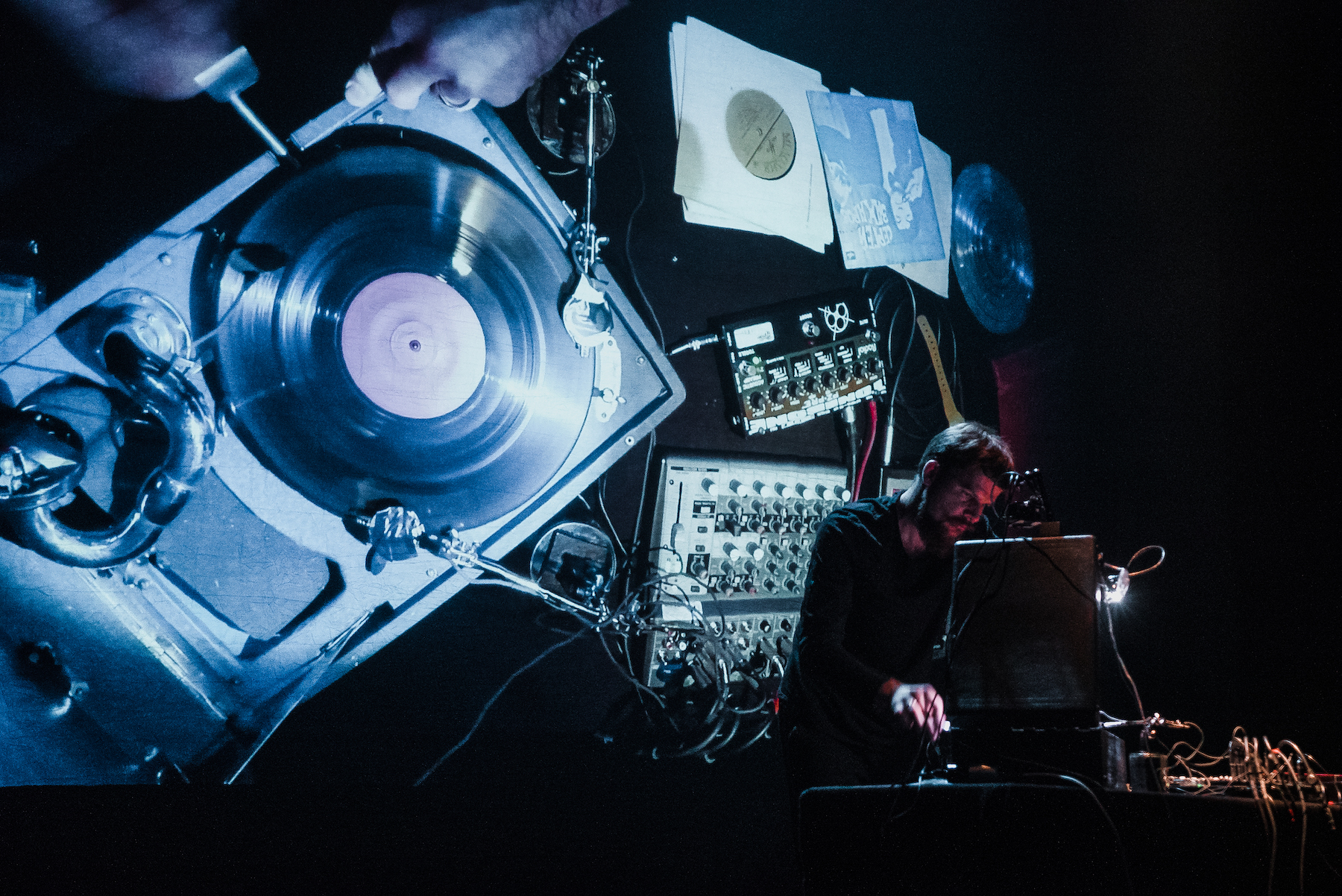
In summer 2017 we went to the northern Karelia in Russia to visit former labour camps of GULAG along the White Sea-Baltic Canal. In one of many abandoned buildings, we've found a package of old phonograph records with a Joseph Stalin portrait on the cover. It was a multiple gramophone disk edition of Stalin's report on the draft constitution of the U.S.S.R delivered at the extraordinary eighth congress of Soviets 25 of November in the year 1936. But there were no Stalin speeches inside. It was full of Soviet popular music records. Inhabitants had thrown out records of Stalin's voice after his death and exposure of Stalin's cult but they kept the package maybe because of its nice red colour and good quality, to use it for other records. That's how it is. It shows us how auditory history works.
Performance is based on these found records. I'm playing with them, cutting apart and mixing them together. I'm letting overlapping sounds emerge in a new post-historical context. I'm just trying to let auditory memory relieve itself, recall the sound of forgotten voices.